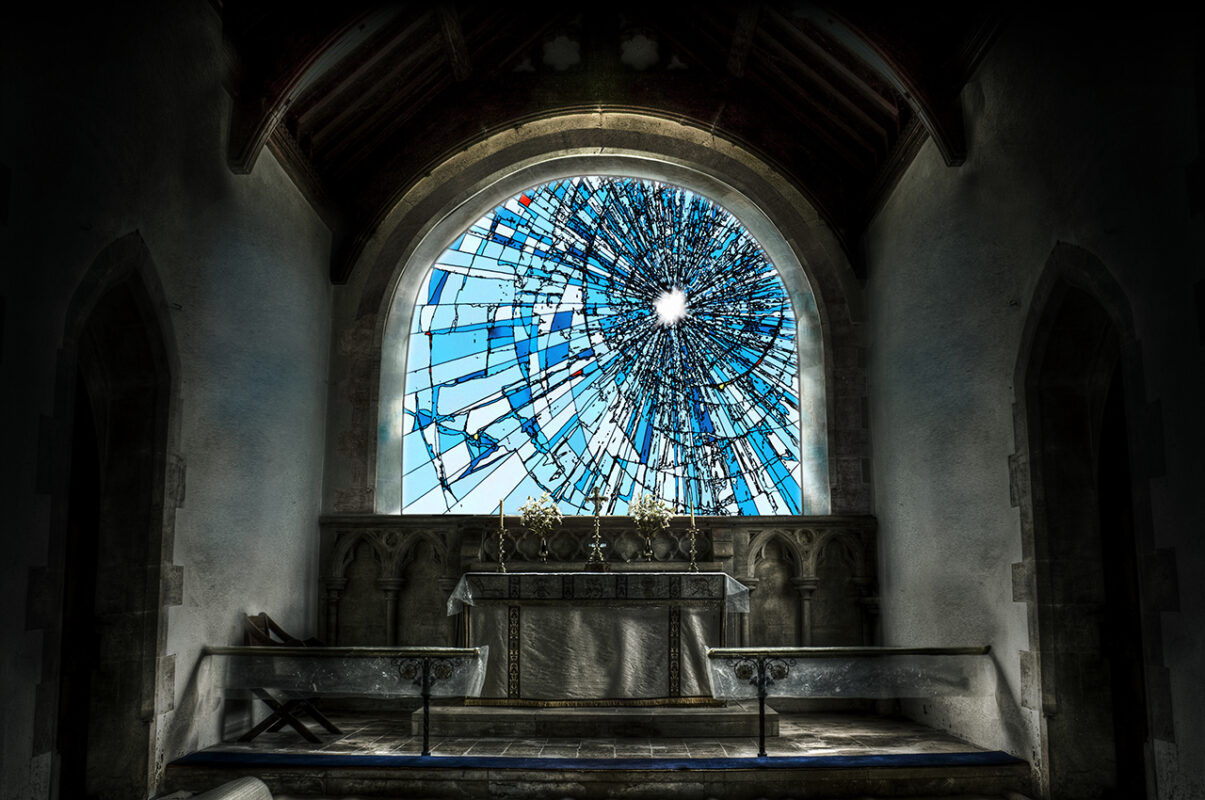Without Sin
Date
2012
Material
Stained Glass, Lead
Dimensions
H400 x W380cm (H157 x W150in)
The emotional response of the audience to the work we create is the most important attribute to us.
We have often touched on religion in our work, not to judge or promote it, but simply because it forms a historical part of human identity, a window into the soul and a muse of art since time began.
In 2011 we were based in Hackney, east London, a neighbourhood filled with artists, but also poverty, crime, drugs, prostitution and general disharmony. One day a local shooting unleashed the tensions and triggered riots in the neighbourhood. One of the first stones to be thrown in the riots was through the window of St Johns, the parish church of Hackney. The vicar, Martin Deutsch, responded with reconciliation, being at the forefront of trying to bring everyone back together. It turned out he had already been trying to do just that for years, keeping the church going for local parishioners, whilst frequently giving the church building to young local people for live gigs or exhibitions.
It was in response to this that we created “Without Sin”, a replacement for the chapel window that was respectful of craft and historic traditions of the past, but without forgetting where we are now and what had just happened.
Without Sin is a stylised depiction of the broken window, the name coming from the Bible “Let him who is without sin cast the first stone”. The fragmented glass panels are traditional leaded stained glass and were to be made by a local artisan. The centre of the radiating shards is deliberately left open, a gateway, the outside is always allowed in, which can be perceived in so many ways, religious or otherwise.
The vicar loved it and said yes. We never push our own thoughts on the narrative of our work, and for him it was as if allowing a doorway to God. The parishioners were nervous and the majority said no. I suspect in light of the recent events they were nervous of change, of outside influence, worried that it could be seen as aggressive, wanting to forget that part of the past perhaps.
But for us it was always intended to be about optimism alongside the realities of humanity.
